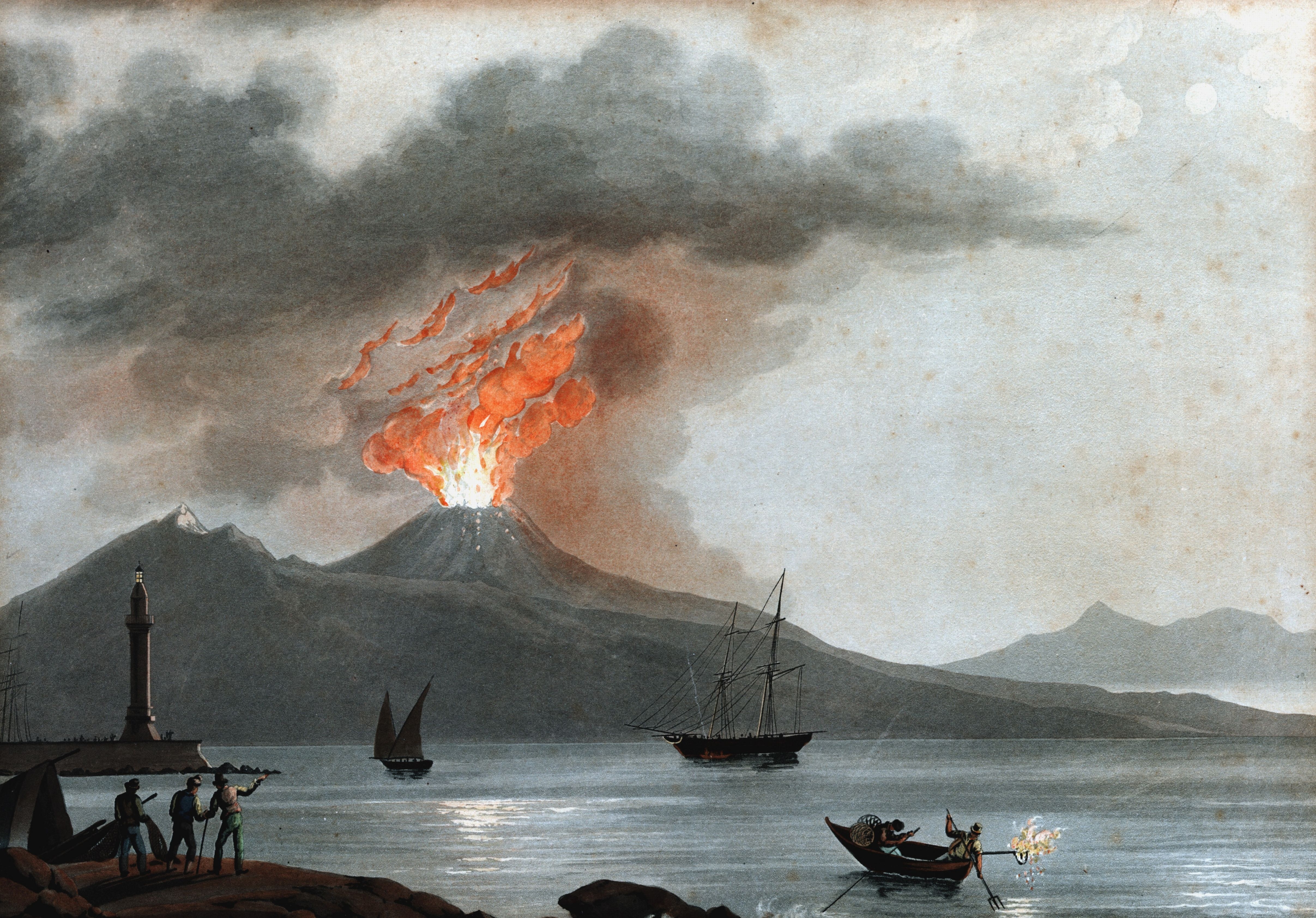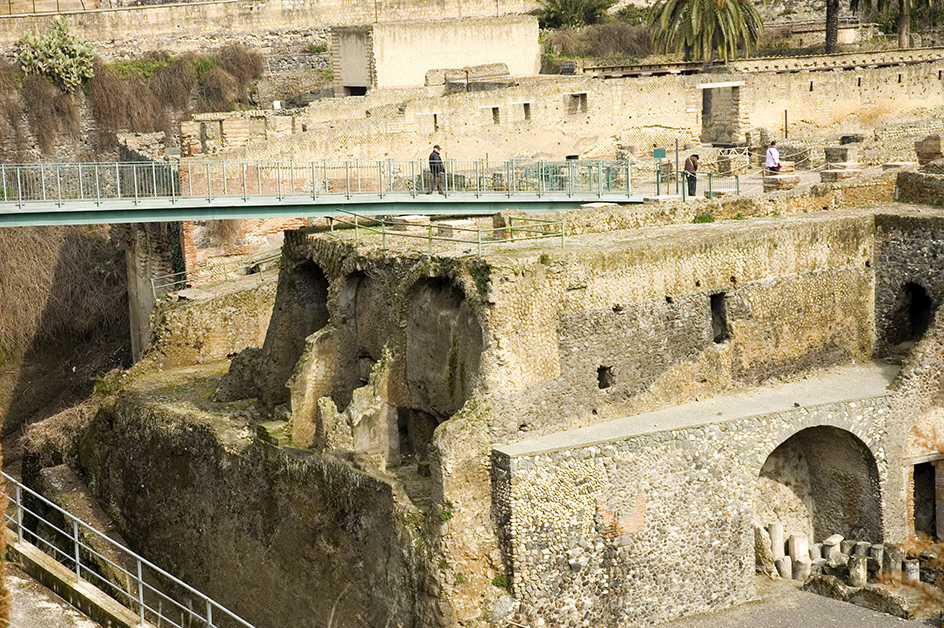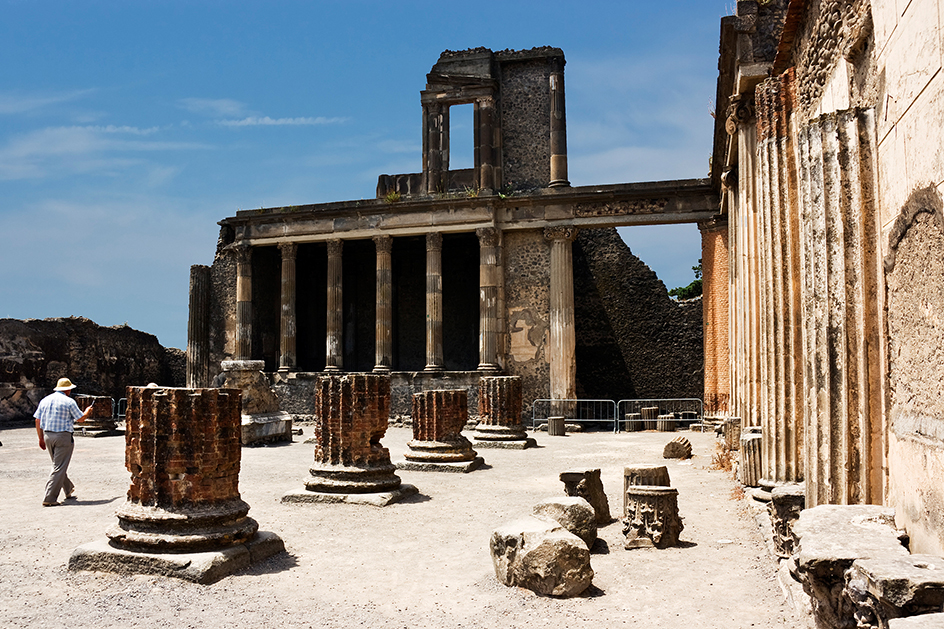Vesuvius, << vuh SOO vee uhs, >> is the only active volcano on the mainland of Europe. It is probably the most famous volcano in the world. It rises on the Bay of Naples, about 7 miles (11 kilometers) southeast of the city of Naples, Italy. Vesuvius has been studied by scientists more than any other volcano because it erupts frequently and is easy to reach. Vesuvius is a cone within the rim of Mount Somma, a big crater formed when the top of the mountain collapsed in the eruption of A.D. 79. The height of the cone changes with each eruption. In 1900, it was 4,275 feet (1,303 meters) high. But after several eruptions since then, its height has dropped to 4,190 feet (1,277 meters). The top of the cone is a cup-shaped crater, ranging from 50 to 400 feet (15 to 120 meters) across. Vesuvius spouts columns of steam, cinders, and sometimes small amounts of lava into the air.


Many people live on the lower slopes of the mountain and on the plains at its foot, in spite of Vesuvius’ history of eruptions. The volcanic soil is extremely fertile and the area is famous for its vineyards of wine grapes.
Early eruptions.
Prehistoric people probably saw Vesuvius in eruption. Roman legends say that the gods had once used the mountain as a battleground, but at the time of Christ it had been dormant for hundreds of years. A large earthquake that probably occurred in A.D. 62 alarmed the people who lived in the neighborhood of Vesuvius. Some smaller quakes occurred in the following years. The first recorded eruption of Vesuvius occurred in A.D. 79, when the cities of Herculaneum, Pompeii, and Stabiae were covered by ashes and lava. An eyewitness account of the disaster was written by a Roman author, Pliny the Younger. His uncle, Pliny the Elder, was killed during the eruption. 
In 472, ashes poured from the crater in such great amounts that they were carried by the wind as far as Constantinople (now Istanbul). Streams of lava and boiling water fell on the villages at the foot of the mountain in 1631. About 4,000 people were said to have died.
Later eruptions.
There were other destructive eruptions in 1794, 1822, 1855, 1872, 1880, 1895, 1906, 1929, and 1944. The greatest destruction in the 1900’s occurred in April 1906, when several towns were destroyed. The eruption that took place in March 1944, during World War II, destroyed the village of San Sebastiano. Soldiers of the Allied armies helped the people of nearby towns escape the lava and volcanic dust.

Before the eruption of 1944, thousands of visitors came to Vesuvius every year. They could go down into the crater for some distance and see a crimson stream of lava flow from the cone and turn into a bed of cold stone. A cable railway which took visitors to within 450 feet (137 meters) of the edge of the crater was destroyed in this eruption. Many people still visit the area.
A Royal Observatory was established on the slopes of the mountain in 1844. Since that time scientists have kept a constant watch over the volcano during and between eruptions. One observer lost his life standing by his post.
